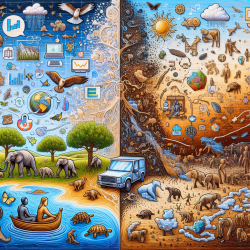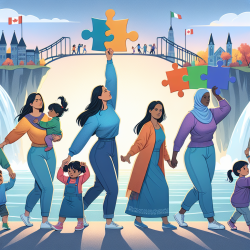Understanding Climate-Induced Migration Through Evolutionary Anthropology
As a practitioner in the field of speech-language pathology, you might wonder how the seemingly distant topic of climate-induced migration could impact your work. However, the research article "Contributions of evolutionary anthropology to understanding climate-induced human migration" by Templon et al. (2021) provides valuable insights that could enhance your practice, particularly when working with children who are part of migrant families.
The Interplay of Climate Change and Human Migration
Climate change has become a significant driver of human migration, affecting millions worldwide. This migration is not just a geographical shift but also involves profound social and cultural changes. Evolutionary anthropology offers a unique perspective by examining how humans adapt to these changes over time. By understanding the evolutionary aspects of migration, practitioners can better appreciate the challenges faced by migrant families and tailor their interventions accordingly.
Key Dimensions of Climate-Induced Migration
Templon et al. (2021) outline three critical dimensions for analyzing climate-induced migration:
- Time: The temporal aspect of migration, including both short-term and long-term impacts on communities.
- Space: The geographical shifts and how they influence social networks and resource availability.
- Severity: The intensity of climate events and their differential impacts on various populations.
By incorporating these dimensions into your practice, you can develop a more comprehensive understanding of the backgrounds and needs of migrant children, leading to more effective therapy outcomes.
Implications for Speech-Language Pathologists
For speech-language pathologists, especially those providing online therapy services like TinyEYE, these insights can be transformative. Understanding the evolutionary and social dynamics of migration can help you create more culturally sensitive and relevant therapy plans. Consider the following strategies:
- Incorporate cultural and linguistic diversity into therapy sessions to make them more relatable and effective for migrant children.
- Use data-driven approaches to assess the specific needs of children from migrant backgrounds, ensuring that interventions are targeted and evidence-based.
- Collaborate with other professionals, such as social workers and educators, to provide a holistic support system for migrant families.
Encouraging Further Research and Collaboration
While the current research provides a solid foundation, there is still much to explore. Practitioners are encouraged to engage in interdisciplinary research and collaborations to further understand the complexities of climate-induced migration. By doing so, you can contribute to a growing body of knowledge that not only enhances your practice but also improves the lives of the children you serve.
To read the original research paper, please follow this link: Contributions of evolutionary anthropology to understanding climate-induced human migration.










